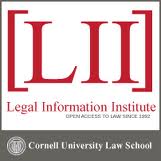 Financial Conduct Authority (Appellant) v Macris (Respondent) [2017] UKSC 19 (22 March 2017)
Financial Conduct Authority (Appellant) v Macris (Respondent) [2017] UKSC 19 (22 March 2017)
The FCA emerged triumphant in this appeal and the outcome has altered the fortunes of persons regulated by the City watchdog. Reversing the Court of Appeal’s judgment, the Supreme Court held by majority that Mr Achilles Macris (M) had not been identified in the Final Notice given to JPMorgan Chase (JPMC). Accordingly, any “third party rights” under section 393 of the Financial Services and Markets Act 2000 (FSMA) were not engaged because the notice did not identify M when interpreted by information readily available in the public domain. Lord Sumption found the analogy with the law of defamation to be unhelpful. Lord Mance said that this was “a difficult case” and Lord Neuberger said it was “difficult to resolve” the meaning of the word “identifies” in section 393(1)(a) despite the provision being a “good example” of Parliament’s enactment of generally lucid statutory language. Lord Wilson entered a note of dissent and he would have dismissed the FCA’s appeal. In 2012, the Synthetic Credit Portfolio (SCP) operated by JPMC had lost $6.2bn because of the rogue “London Whale” trades. Because of the notorious losses the Final Notice entailed a financial penalty or “conduct costs” of £137.6m. Between 2012-2016 the world’s 20 foremost international banks paid a total of £264.03bn in conduct costs of which JPMC’s share was £33.64bn. As the head of the Chief Investment Office, which managed excess deposits including the portfolio comprising the SCP’s traded credit instruments, M’s functions as JPMC’s employee were “controlled functions” under section 59 of FSMA.
The losses were linked to high risk trading tactics, feeble management and failing to react to information alerting JPMC to the SCP’s problems. The appeal, explained Lord Sumption, turned on the meaning of “identifies” and on the meaning of the notice to which that word is being applied. The section 393 procedure aims to enable identified third parties, such as M, working in financial services firms to make representations to the regulator and take the matter to the Upper Tribunal (UT). Persons not party to regulatory settlement but discredited in enforcement notices are protected from unfair prejudice via the mechanism in section 393. A copy notice must be served to the third party but M was not given one. M had not been identified by name or job title but only as “CIO London management”. M argued that since he had already been identified by name in a US Senate Committee report on the SCP’s losses, the FCA notices enabled anyone to deduce the identity of the person known as “CIO London management”. M was not a party to the FCA’s settlement with JPMC. He was separately fined £762,900.
Earlier Proceedings
Upholding M’s complaint, the UT applied a two-stage test and found that a suitably experienced reader would construe “CIO London management” as a reference to the most senior individual. The Court of Appeal rejected the FCA’s argument that Macris would only have been “identified” if he could have been identified from the matters exclusively contained in the notice. Applying the decision in Knupffer [1944] UKHL 1, the court unanimously held that a “simple objective test” is applicable when determining whether “matters” in a notice issued by the FCA “identified” a person who was not directly named.
Gloster LJ drew an analogy with the authorities relating to identification of individuals in defamation proceedings. She did not think that determining the question whether a matter “identifies” a person for the purposes of section 393 of FSMA should be any different to the approach to the question whether an allegedly defamatory statement, which refers to an individual person, whether, for example, by his office, or by the first and last letter of his name, or by means of a description of his status or otherwise (for example, by a pseudonym) identifies a claimant in defamation proceedings. The upshot was that persons operating in M’s field were able to identify him from the notice’s contents when read together with publicly available material.
The Supreme Court
The issue was the extent to which background facts could be taken into consideration when deciding whether a person had been identified in a notice under section 393(1)(a). Giving a split decision, the court allowed the FCA’s appeal and held that M was not “identified” as to engage third party rights under FSMA. Lords Neuberger and Hodge agreed with Lord Sumption’s lead judgment. Lord Mance concurred with the majority regarding the appeal’s outcome but he also agreed with Lord Wilson on the issue of law.
(i) Lord Sumption
His Lordship judged that “a person is identified in a notice under section 393 if he is identified by name or by a synonym for him, such as his office or job title” He said that it must be evident from the notice that the synonym could only apply to one person and he must be identifiable from information contained either in the notice or publicly available elsewhere. Lord Sumption explained that it is possible to turn to public information available elsewhere only where it enables the interpretation (as opposed to supplementation) of the notice’s language. However, resorting to additional facts about the person is not permissible where those facts read in juxtaposition with the notice make it apparent that they refer to the same person. Applying a fivefold rationale, he held at paras 12–16 that:
- section 393 defines what fairness requires in the context of notices issued by the FCA.
- statute is clear that it must be the reasons contained in the notice which identify the third party and not an extrinsic source.
- FSMA must be read in a manner which enables the FCA to ensure that a third party is not “identified” in the notice, when it does not know precisely what information is available elsewhere.
- the relevant audience for publication is the public at large, not a specific industry sector specially familiar with the third party or his business.
- the law of defamation imposes strict liability for publishing a defamatory statement and since it serves a different purpose to section 393 the suggested analogy with it was unhelpful.
Lord Sumption rejected the UT’s view that any reference to “management” must be to an individual. The crucial question was whether the terms of the notice alone conveyed to a reasonable member of the public that “CIO London management” was a synonym for M. Since it was not, the appeal was allowed and M was not a third party under section 393.
(ii) Lord Neuberger
In the present case, Parliament had left it to the courts to determine the precise scope of statute by reference to specific sets of facts. Construing section 393(1)(a) broadly constrains the FCA’s activities whereas a narrow construction increases those at risk of being harmed by notices without any recourse. A wider meaning resulted in numerous problems such as subjective assessment as to the width of statute’s scope, automatic disputes, odd consequences, arbitrary outcomes and immediate difficulties for the FCA. Lord Neuberger opined that the statutory language specifies:
25. … that the person must be identified in the notice, not that he must be identifiable as a result of the notice.
Donald v Ntuli [2011] EWCA Civ 1276 left no doubt that “any investigation process should not require any detective work; and so jigsaw identification … would not do” and therefore M’s identification in the US Senate Committee report would not do because the public would be unaware of that report and people would not refer to it with the purpose of identifying M.
Lord Neuberger cautioned against a literal reading of statute because it resulted in “too narrow a meaning”. The correct test is whether the individual is “named in the notice, or the description in the notice must be equivalent to naming him”. Someone is “identified” in a document if (i) his position or office is mentioned (ii) he is the sole holder of that position or office and (iii) reference by members of the public to freely and publicly available sources of information would easily reveal the name of that individual by reference to his position or office.
(iii) Lord Mance
The UT attached no significance to the fact that the British press had not known M’s identity until legal proceedings prompted them to it. Despite the temptation to read section 393 broadly and find unfairness to M, the intention or effect of statute was not to put the FCA in difficulties. Equally, the positions espoused by Lords Sumption and Neuberger took too narrow a view of the third party protection contemplated by FSMA. Shaped by actual naming or identification through a “synonym” their “dictionary” approach was even narrower than FCA’s primary case. Since the notice was not issued in a vacuum, a dictionary approach was merely one possibility. To avoid the impracticality of giving notice to a third party in almost every case, distancing himself from the lower courts, his Lordship stated:
37. … that a notice cannot be said to identify an individual merely because persons acquainted with him or his company could do so.
Disagreeing with Lord Wilson on the factual point, Lord Mance held that “CIO London management” did not equate with or identify M, and that no information had been shown to exist in the public domain which, when read alongside the notice, identified M with CIO London Management.
(iv) Lord Wilson
The majority view failed to strike a fair balance between individual reputation and regulatory efficiency. The key question was whether ordinary readers or ordinary market operators would conclude that the person referred to in the notice was M. For Lord Wilson, the question was answered:
59. … by reference to the particular sort of damage which a wrong criticism of an individual in a notice given by the Authority is likely to cause to him.
Overall, his Lordship essentially agreed with Lord Mance’s formulation that the crucial question is whether the words in the notice are such as would reasonably lead an operator in the same market sector who is not personally acquainted with M – by reference only to information in the public domain to which he would have ready access – to conclude that the individual referred to in the notice is M (or indeed any other identified trader or employee).
Comment
The FCA must have breathed a sigh of relief after reading the majority judgments because an outcome favouring M would have left its enforcement model in tatters. A ruling favouring M would have produced serious consequences for both firms seeking speedy resolution of investigations and also the FCA because a broader test for identification would delay investigations and undermine the process of resolution by swift and timely settlement.
The upshot of this judgment is that the FCA will retain the ability to publish its conclusions on individual culpability of third parties, and negotiate bilaterally with financial services firms, without first giving those persons the chance to explain their conduct or make representations in their defence. Consequently, the outcome puts traders in an invidious position because the FCA is not obliged to respect their professional reputation or even allow them an opportunity to defend themselves prior to the publication of a notice about their employer bank or firm.
Instead, fairness and people’s reputations have potentially been placed on the altar of sacrifice in exchange for regulatory expediency in the enforcement process. However, given the toxic level of misconduct by rogue bank employees in recent years, the justices’ overall reasoning coincides with the growing trend towards enhancing senior management’s accountability and transparency in the financial services sector.








Leave a comment